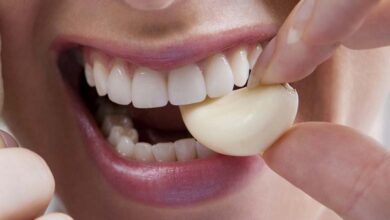Flare-ups of gout are linked to heart attack and stroke

Gout is an inflammatory rheumatism that causes pain and swelling in the joints. In question, the uric acid produced by the body during the process of breaking down purines, natural substances present in the cells of the body and in most foods. These purine levels are especially high in meat, seafood, and alcohol. The result of a buildup of uric acid crystals in the joint, gout often affects the big toe, but can affect larger joints, such as the knee. Already associated in history with the art of living and eating, gout is linked to obesity, excessive alcohol consumption, but also to taking diuretics to treat high blood pressure.
The Nottingham researchers together with their colleagues at Keele, found that the risk of heart attacks and strokes temporarily increases within 4 months of a gout flare-up.
Cardiovascular risk increases in the weeks following the gout flare-up
The study analyzed data from 62,574 participants with gout of which 10,475 suffered a heart attack or stroke after being diagnosed with gout. The researchers were therefore able to assess the association between heart attacks or strokes and recent gout flare-ups and adjusted these results for comorbidities, socioeconomic criteria, lifestyle factors and treatments. followed, among others. The analysis reveals that:
gout patients who have had a heart attack or stroke are 2 times more likely to have had a gout flare in the 60 days prior to the event, and 1.5 times more likely to have a gout flare gout in the previous 61 to 120 days;
the incidences of heart attacks and strokes are identical in the only patients who consulted for a single flare of gout and who also suffered a heart attack or stroke: this suggests that
Gout flares induce a transient increase in cardiovascular events;
finally, gout patients who died of a heart attack or stroke were more than four times more likely to have experienced a gout flare in the previous 0-60 days and more than 2 times more likely to have had one in the previous 61 to 120 days.
What mechanisms are involved?
Patients with gout generally have more cardiovascular risk factors, however the correlation between the disease and these risk factors remains poorly understood.
At high levels, uric acid deposits in and around joints as needle-shaped urate crystals. Once freed from their deposits, these crystals cause severe inflammation manifesting as joint pain, swelling, redness and tenderness that often lasts 1-2 weeks. These episodes, called gout flares, recur regularly. The researchers suggest that inflammation weighs in the risk of heart attack and stroke.
Lead author Professor Abhishek summarizes: gout flares are associated with a transient increase in post-flare cardiovascular events. People with recurrent gout flares should be seen and treated long term with urate lowering drugs such as allopurinol and anti-inflammatories such as colchicine for months after gout flares”.
Finally, these patients are also advised to adopt a healthy lifestyle with appropriate treatment in case of comorbidities such as high blood pressure, high cholesterol, obesity and diabetes, in order to better control this risk of cardiovascular event.












